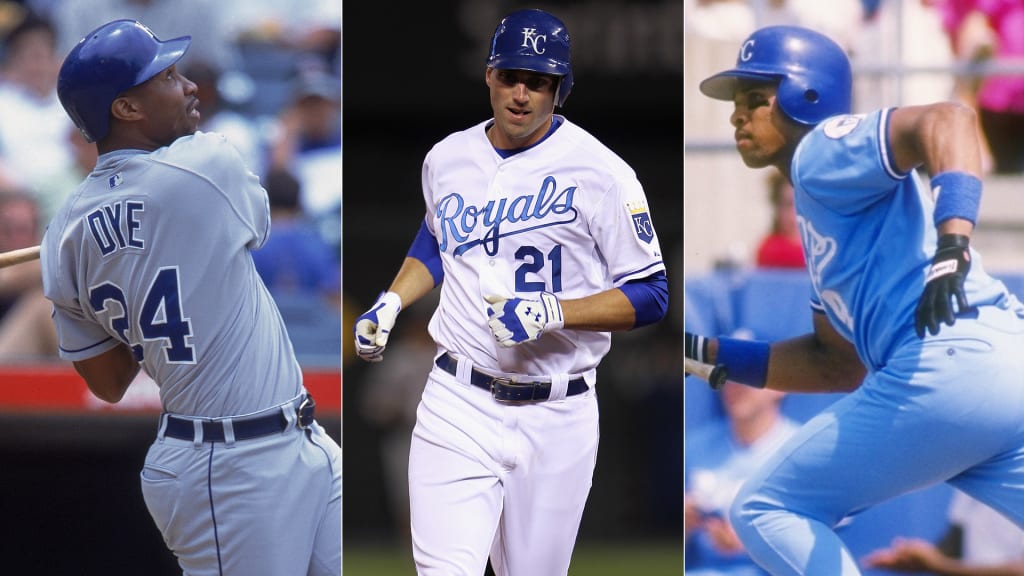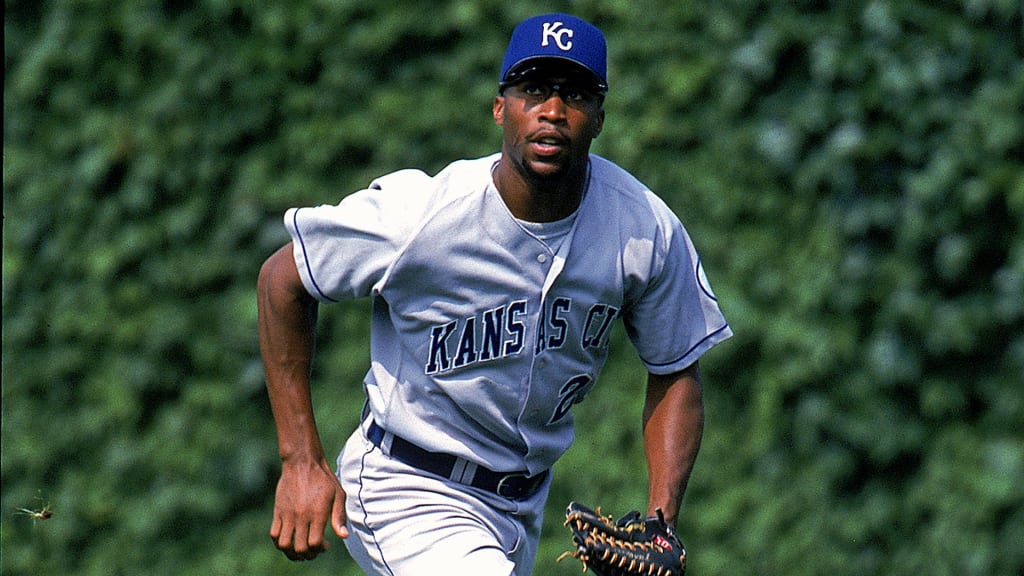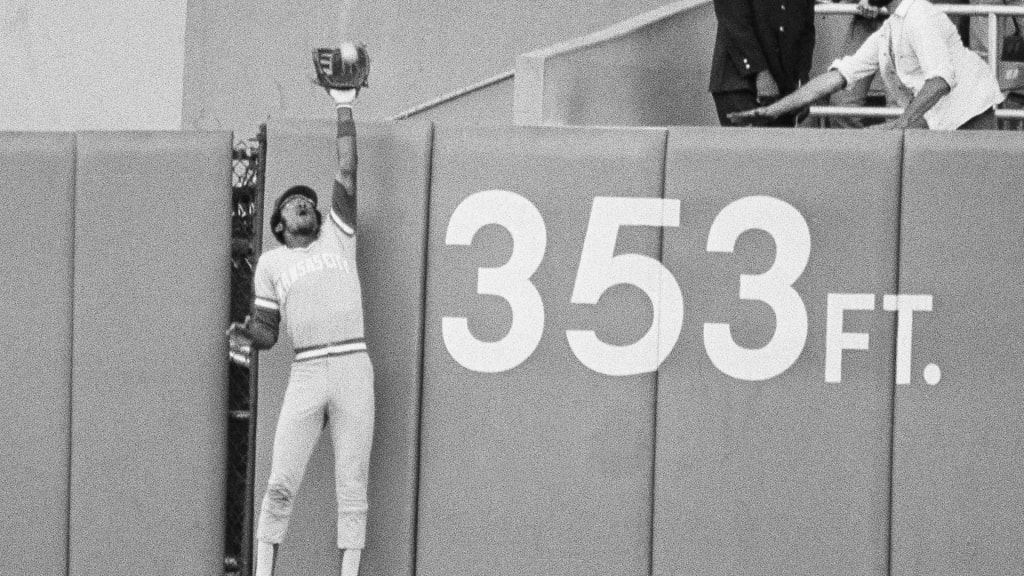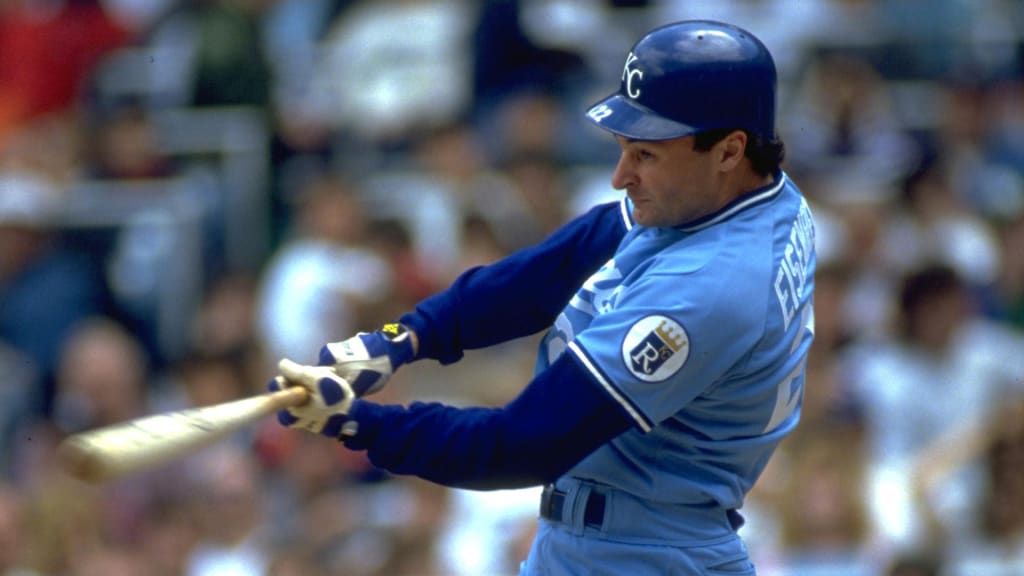
No one loves a good debate quite like baseball fans, and with that in mind, we asked each of our beat reporters to rank the top five players by position in the history of their franchise, based on their career while playing for that club. These rankings are for fun and debate purposes only … if you don’t agree with the order, participate in the Twitter poll to vote for your favorite at this position.
Here is Jeffrey Flanagan’s ranking of the top 5 right fielders in Royals history, and please note that our minimum to qualify for these rankings is at least 200 games in right field. Next week: DH
1) Danny Tartabull, 1987-91
Key facts: One All-Star Game (1991)
Tartabull was truly one of the more interesting players in Royals history. “The Bull,” as he was nicknamed, had exquisite power, hitting 124 home runs for the Royals in five seasons, driving in a 100 or more runs three times, and posting an overall .894 OPS.
Tartabull burst on the scene with the Mariners as a rookie in 1986, when he hit 25 home runs with 96 RBIs while transitioning from being a middle infielder to a right fielder. It’s hard to even imagine Tartabull as a middle infielder. As the great Jim Murray once wrote of Tartabull playing shortstop or second base, “It was a little like Goldie Hawn playing Lady Macbeth. He belonged in the outfield.” Tartabull, somewhat remarkably, finished fifth in Rookie of the Year balloting in ’86 behind Jose Canseco, who won it, Wally Joyner, Mark Eichhorn and Cory Snyder.
Tartabull was traded to the Royals in the winter before the 1987 season for Scott Bankhead, Mike Kingery and Steve Shields -- what were the Mariners thinking? Of course, in Seattle’s defense, Tartabull was anything but a great defender, and he had issues in the clubhouse, once reportedly getting into a fight with budding Royals star Bret Saberhagen.
But Tartabull could flat out hit. In his first season in Kansas City, he hit 34 home runs with 101 RBIs in cavernous Kauffman Stadium (then Royals Stadium). His best season came in '91, when he led all of MLB with a .593 slugging percentage.
2) Jermaine Dye, 1997-2001
Key facts: One All-Star Game (2000) and one Gold Glove ('00) with the Royals
With the Royals, Dye was the complete package -- a powerful force at the plate with a cannon for an arm in right field. Dye had 44 assists in right field for the Royals, including 17 in 1999. Teams were foolish to even attempt to stretch singles into doubles, or go first to third on him.
Dye certainly benefited, as did his teammates from that Royals era, from the fences at Kauffman Stadium being move in 10 feet from bullpen to bullpen. From 1999-2001, Dye belted 73 home runs, including a career-high 33 (at the time) in 2000. From 1999-2000, Dye drove in 237 runs, and in 2000 he had a .951 OPS.
Dye was shipped to Oakland in the infamous three-team trade with the Rockies in '01 that netted the Royals shortstop Neifi Perez. Ouch.

3) Al Cowens, 1974-79
Key facts: One Gold Glove Award (1977)
Cowens was a fixture in right field for the Royals during their rise to greatness in the 1970s. His best year came in '77: .312 average, .885 OPS, 32 doubles, 14 triples, 23 home runs and 112 RBIs. He finished second in the American League MVP Award voting that season behind Rod Carew.
Cowens was a solid defender with a plus arm. He just never came close to those incredible offensive numbers from 1977 again.

4) Jim Eisenreich, 1987-92
Key facts: 33 doubles, 27 stolen bases in 1989
After sitting out two seasons following his Tourette Syndrome diagnosis, Eisenreich found a home with the Royals in 1987, resurrecting his career after a promising start with the Twins. Eisenreich was able to play all three outfield positions -- 265 games in right field while in Kansas City -- and he was a sound defender while being pesky at the plate.
Eisenreich hit .293, .280, .301 and .269 during his final four seasons in Kansas City while stealing 55 bases.

5) Jeff Francoeur, 2011-13
Key facts: 38 outfield assists with the Royals
When the Royals signed Francoeur to a free-agent deal at the Winter Meetings in 2010, they were immediately rewarded with his career year in '11: career-high 47 doubles, career-high 22 stolen bases, .285 average, 20 home runs, 87 RBIs and 16 outfield assists. “Frenchy” never had another year like it and he was released mid-season less than two years later.

Honorable mention:
Clint Hurdle, 1977-81: Royals fans know the story all too well: Sports Illustrated cover boy, labeled a “phenom” at age 20, then a bust. Hurdle did have one solid year in '80 with 31 doubles, 10 home runs and a .294 average.
